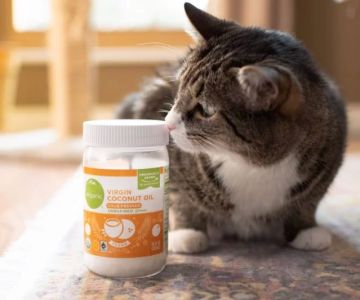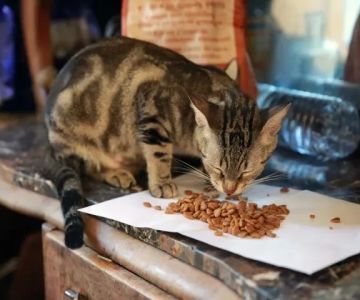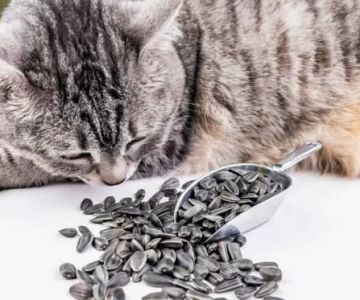Best Cat Food for Hairball Control: Top Picks for Your Feline Friend
If you're a cat owner, you’ve probably dealt with the common issue of hairballs. As a loving cat parent, it can be frustrating to see your feline friend struggling with hairballs, especially when they cough or vomit them up. After all, no one likes dealing with the mess. That's when I started searching for the best cat food for hairball control. Over the years, I’ve learned that the right food can help alleviate this issue and keep your cat comfortable. In this article, I’ll share what I’ve learned about managing hairballs and recommend the top cat foods that can help you keep your cat healthy and hairball-free.
1. Understanding Hairballs and Why They Happen
Before we dive into the best cat food for hairball control, it’s important to understand why cats get hairballs in the first place. Cats are natural groomers, and they spend a large portion of their day licking their coats to keep themselves clean. However, as they groom, they inevitably ingest loose fur, which can lead to the formation of hairballs. These hairballs accumulate in the cat's stomach and can cause them to cough, hack, or even vomit. While hairballs are a natural part of life for cats, excessive hairballs can lead to digestive discomfort and health issues.
1.1. Long-haired vs. Short-haired Cats
It’s important to note that certain cats are more prone to hairballs than others. Long-haired cats, like Persians or Maine Coons, tend to have more fur that they shed, making them more susceptible to hairballs. Short-haired cats, on the other hand, still experience hairballs but may not suffer as frequently as their long-haired counterparts. In my own experience, I’ve found that regular grooming and the right diet can significantly reduce the occurrence of hairballs in both types of cats.
2. How the Right Cat Food Helps Control Hairballs
When I started looking for solutions to my cat’s hairball issues, I discovered that the right cat food can play a huge role in hairball prevention. Cat foods specifically designed for hairball control contain ingredients that help reduce shedding, improve digestion, and allow the fur to pass more easily through the digestive system. I found that adding these types of foods to my cat’s diet not only helped reduce hairball frequency but also kept her coat shiny and healthy.
2.1. High Fiber Content
One of the key ingredients to look for in hairball control food is fiber. Fiber helps move hair through your cat’s digestive tract more easily, preventing the hair from becoming trapped in the stomach. Foods with higher fiber content tend to help prevent hairballs from forming, as the fibers act as a natural cleanser for the digestive system. I learned that many brands offer special formulas with added fiber, such as beet pulp or psyllium, which greatly benefit my cat's digestion.
2.2. Omega Fatty Acids
Another important factor in reducing hairballs is maintaining a healthy coat. Omega fatty acids, such as omega-3 and omega-6, are known for promoting healthy skin and fur. Adding these fatty acids to your cat’s diet can reduce shedding and improve the overall health of your cat’s coat. I found that when I started feeding my cat a food rich in omega fatty acids, not only did her hairballs decrease, but her fur became noticeably softer and shinier.
3. Top Picks for the Best Cat Food for Hairball Control
Now that we understand the science behind hairballs and the role of diet, let’s take a look at some of the best cat food options that are specifically designed to help control hairballs. These brands have been recommended by veterinarians and cat owners alike for their effectiveness in reducing hairballs and supporting healthy digestion.
3.1. Hill’s Science Diet Hairball Control
Hill’s Science Diet Hairball Control is one of the most well-known brands for hairball prevention. This formula contains a blend of natural fibers and a unique blend of ingredients to help your cat’s fur pass through their system smoothly. My cat loved the taste, and I noticed a significant reduction in her hairball incidents. It’s a great option for long-haired cats and those that have a tendency to cough up hairballs more often.
3.2. Royal Canin Hairball Care
Royal Canin Hairball Care is another popular choice that I highly recommend. This formula is designed to promote a healthy digestive system, and it contains a mix of fibers that help reduce the formation of hairballs. The kibble is also specifically designed to be easy for cats to chew, making it ideal for picky eaters. I’ve heard from other cat owners that their cats’ coats became healthier and shinier after switching to Royal Canin.
3.3. Blue Buffalo Indoor Hairball Control
If you’re looking for a more natural option, Blue Buffalo Indoor Hairball Control might be the way to go. It’s made with high-quality protein, wholesome grains, and a proprietary blend of fibers to help prevent hairballs. The added antioxidants and vitamins support overall health, and my cat enjoyed the taste. What I really like about Blue Buffalo is that they use real chicken as the first ingredient, making it a great choice for cats with sensitive stomachs.
4. Other Tips for Managing Hairballs
While food is an essential part of managing hairballs, there are other things you can do to help reduce their occurrence. Regular grooming is one of the best ways to keep hairballs at bay. Brushing your cat at least once a week can remove loose fur and prevent it from being ingested. I’ve also found that using a hairball gel or supplement can help keep things moving through your cat’s digestive system. And of course, make sure your cat has access to plenty of fresh water to stay hydrated, which also aids digestion.
4.1. Regular Grooming
Brushing your cat regularly is a great way to manage hairballs. For long-haired breeds, I recommend brushing every day to prevent tangles and mats. Short-haired cats can usually be brushed once or twice a week. I’ve found that brushing reduces the amount of loose fur that my cat ingests, which directly impacts the frequency of hairballs.
4.2. Hairball Gels and Supplements
If your cat is particularly prone to hairballs, adding a hairball gel or supplement to their diet can help. These gels are typically flavored and can be given directly to your cat to help lubricate their digestive tract and make hairballs pass more easily. I’ve used this with my cat during times when she seems to struggle with more frequent hairballs, and it works like a charm.











